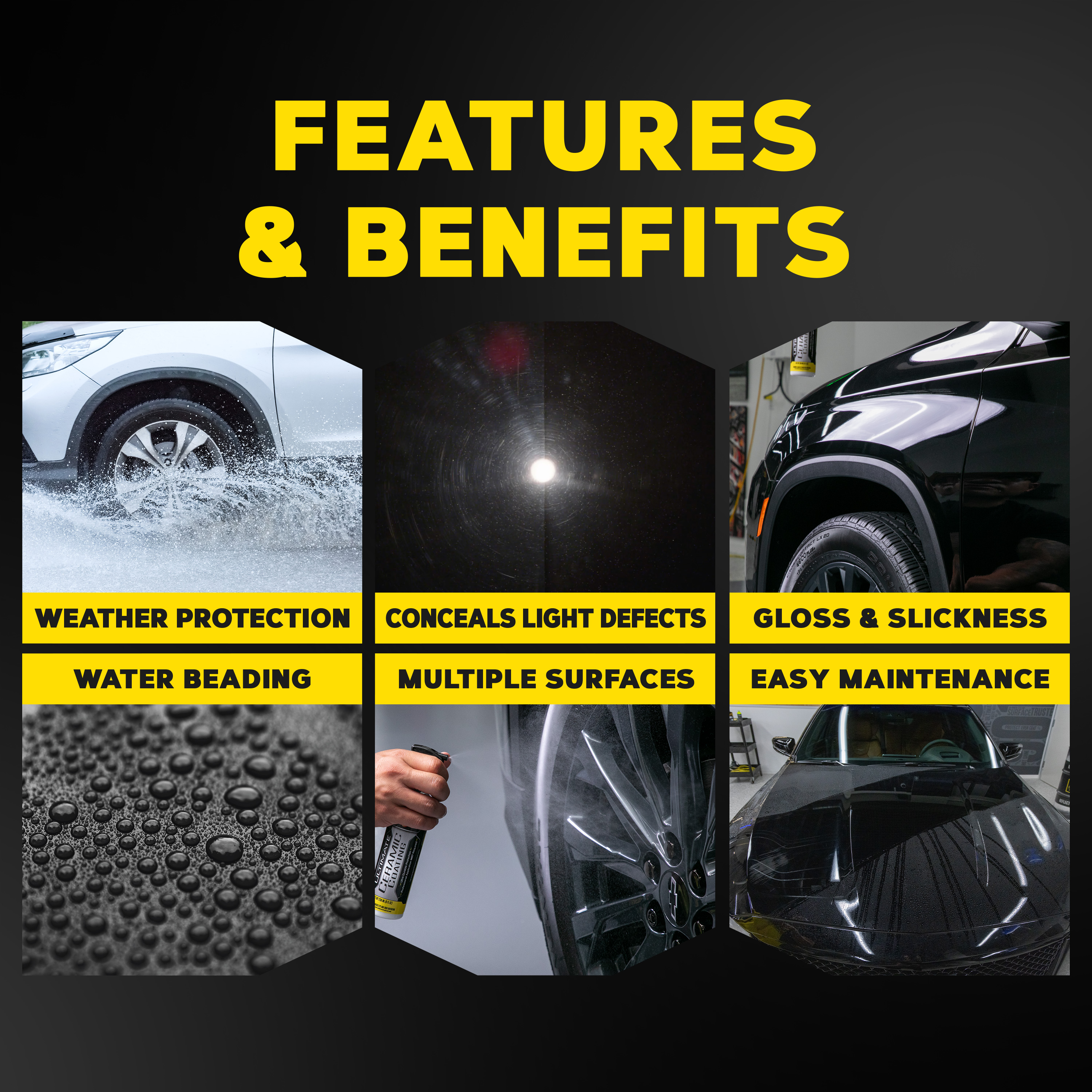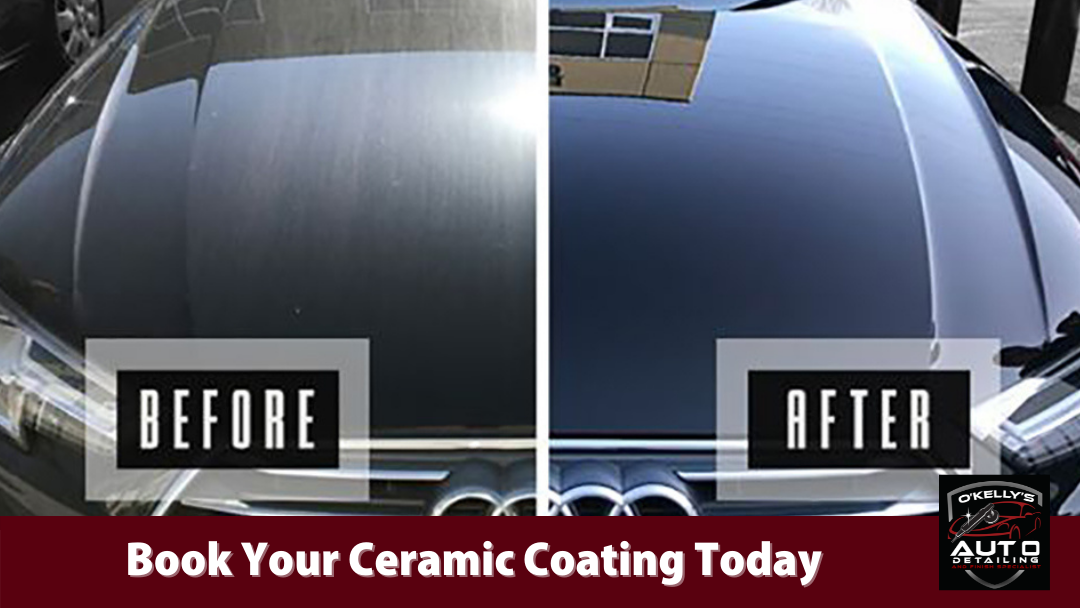How Ceramic Coating Enhances Your Vehicle's Protection and Appearance
How Ceramic Coating Enhances Your Vehicle's Protection and Appearance
Blog Article
Ceramic Finish vs. Traditional Wax: Which Provides Better Long-Term Protection?
The dispute in between ceramic finishes and typical wax for car security has amassed substantial focus amongst auto fanatics and professionals alike. While both serve the purpose of protecting paint, their differences in longevity, application, and long-term maintenance prices might affect a customer's choice. Ceramic layers flaunt remarkable durability and resistance to environmental aspects, yet the complexity of their application questions about ease of access and practicality. As we discover these contrasting alternatives, it becomes necessary to consider not just the immediate benefits but also the implications for automobile care over time.
Summary of Ceramic Layer
Ceramic coating has gained substantial appeal amongst vehicle enthusiasts and detailers alike because of its innovative safety high qualities. This innovative innovation is created to produce a durable, hydrophobic guard over an automobile's paint surface, considerably boosting its resistance to environmental pollutants such as dirt, UV rays, and chemical spots. Unlike standard wax, which provides a short-lived layer of protection, ceramic coverings bond at a molecular degree with the paint, using durable durability-- typically prolonging past 2 years with correct upkeep.
The application procedure entails thorough preparation of the vehicle's surface, consisting of cleaning and polishing to ensure ideal bond. As soon as applied, the finish treatments to develop a robust layer that not just adds deepness and gloss to the paint however additionally streamlines maintenance. With its hydrophobic properties, ceramic finish allows water and dust to glide off more easily, reducing the regularity of washes and reducing the danger of swirl marks.
Moreover, ceramic finishes are offered in various formulas, allowing individuals to choose items customized to their details demands and preferences. On the whole, ceramic coating stands for a considerable advancement in paint protection modern technology, supplying exceptional efficiency compared to traditional alternatives.
Overview of Typical Wax
Traditionally considered a staple in auto treatment, wax acts as a prominent option for those seeking a simple method to enhance and secure their vehicle's paint - ceramic coating. Automotive wax normally consists of natural active ingredients, such as carnauba, or artificial substances, created to produce a safety layer on the surface of the paint. This layer not only improves the lorry's gloss and beam but additionally supplies an obstacle versus environmental impurities
The application of wax is generally easy to use, making it obtainable for both experts and DIY enthusiasts. It can be applied by hand or machine, enabling versatility in the detailing process. When used, wax requires a healing duration, after which it sets to form a protective covering. Wax is additionally known for its capacity to push back water, advertising a beading result that aids in the prevention of water places and rust.
Nevertheless, while wax works for enhancing the visual charm of an automobile, it is essential to keep in mind that the protection it provides may necessitate much more regular reapplication compared to alternative items, such as ceramic coatings. Generally, typical wax remains a preferred option for those focusing on simplicity of usage and immediate aesthetic improvement.
Sturdiness and Long Life Contrast
While both ceramic finishes and standard wax offer safety benefits for vehicle paint, their resilience and longevity vary substantially. Typical wax, normally made from all-natural carnauba or synthetic polymers, typically provides a safety layer that lasts roughly three to six months. This fairly short lifespan demands regular reapplication to preserve optimum defense.
On the other hand, ceramic finishings are crafted from sophisticated nanotechnology, creating a covalent bond with the paint surface. This results in a robust, hydrophobic layer that can sustain for 2 to five years, depending upon the item and ecological conditions. The remarkable durability of ceramic coatings is credited to their chemical structure, which offers enhanced resistance to scrapes, UV rays, and oxidation.

Security Versus Environmental Elements
Shielding an automobile's paint from ecological factors is crucial for maintaining its appearance and worth over time. Vehicles are frequently revealed to a range of elements, consisting of UV rays, bird droppings, tree sap, acid rainfall, and roadway grime, all of which can jeopardize the honesty of the paintwork.
Ceramic coverings provide a robust protection against these ecological aggressors. Unlike standard wax, which can weaken rapidly under UV exposure, ceramic finishings create a resilient, hydrophobic layer that stands up to the dangerous results of sunlight and environmental pollutants. This sophisticated modern technology produces a chemical bond with the vehicle's surface area, supplying premium protection that lasts for many years, even in harsh problems.
In contrast, ceramic finishings preserve their protective top qualities much longer, significantly minimizing the threat of paint damage and guaranteeing that the car keeps its aesthetic appeal. As a result, ceramic coatings are significantly identified as the remarkable selection for long-lasting defense against environmental factors.
Application and Upkeep Distinctions
The approaches of application and succeeding maintenance for ceramic coverings and standard wax vary dramatically, impacting the general user experience and efficiency of each product. Ceramic coverings call for a more intricate application process, typically involving surface prep work that includes washing, sanitizing, and polishing the car. Once the surface prepares, the ceramic layer is used in a regulated environment, usually needing specialist her explanation knowledge to guarantee proper curing and bonding to the paint.

While both products improve vehicle appearance, the longer-lasting protection used by ceramic coatings may validate their initial investment, in spite of the even more demanding application process. Alternatively, traditional wax remains a prominent selection for those seeking a simpler, albeit temporary, solution.

Final Thought
Finally, ceramic finishings demonstrate considerable advantages over standard wax in terms of resilience and environmental management. With a life expectancy prolonging two to 5 years and superior resistance to UV rays, dirt, and chemical stains, ceramic finishes offer an extra effective solution for long-term automobile upkeep. Although the application procedure might require expert experience, the resulting price savings and decreased regularity of reapplication emphasize the worth of ceramic layers for those seeking ideal vehicle defense.
The debate in between ceramic finishes and standard wax for lorry defense has actually amassed considerable focus among automobile lovers and professionals alike. Unlike typical wax, which provides a momentary layer of defense, ceramic layers bond at a molecular degree with the paint, providing resilient durability-- often prolonging beyond 2 years with appropriate upkeep.
While both ceramic coatings and conventional wax deal protective advantages for auto paint, their durability and long life click to find out more differ significantly. For automobile enthusiasts seeking long-term security, ceramic finishes provide an engaging benefit over standard wax products.
In conclusion, ceramic finishes show substantial benefits over standard wax in terms of resilience and ecological protection.
Report this page